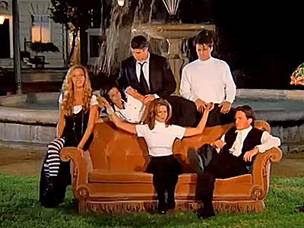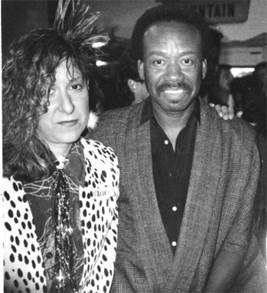Last Thursday night, I had a dilemma. Rita and I were watching the Chiefs game, but my Twitter feed was telling me that Brady Singer had allowed no hits through six innings. Then seven innings. I switched channels to DVR the Royals game. Then back to football, but following the Royals on my phone. Two outs in the 8th – then a hit. Damn. But what an exciting night for KC sports fans.

No need to detail the Chiefs masterful victory. Almost everyone reading this watched the game. But I do want to give a shout-out to Patrick Mahomes for doing his post-game interview in a 1945 Monarchs jersey. My kind of guy.
Tom Seaver and Lou Brock: Two first-ballot Hall of Famers died this past month. Lou Brock at age 81. Tom Seaver at age 75.
Brock and Seaver were signed out of college, but not by the teams they would lead to championships. Both stories are part of baseball lore.
Brock was recruited by scout Buck O’Neil who signed him to the Chicago Cubs in 1960. Brock made the major league roster in 1962, but in midseason 1964 was traded to the Cardinals. It was a multi-player trade, but the key players were Brock in exchange for pitcher Ernie Broglio. Some pundits thought the Cards made a bad trade, and Brock liked to recount one in particular: “(Broadcaster) Brent Musburger was just out of college when the trade was made. They sent him in to do the story. It was his first assignment. The content of the interview led to a headline in the paper, ‘Cubs pull off greatest steal since the Brinks Robbery.’” Some of the Cardinals players were also not impressed. Bob Gibson: “We thought it was the worst trade ever.” What Musburger and Gibson likely did not know was that Broglio had a sore arm and would be out of baseball after the 1966 season.
Buck O’Neil said another factor was in play. He was a coach for the Cubs in 1964 and heard that Brock might be traded. He advised GM John Holland not to make the trade, but found himself arguing against an unwritten quota system limiting the number of Black players on one team. The Cubs had five, including stars Ernie Banks and Billy Williams. Holland showed O’Neil complaint letters from season ticket holders, one saying “What are you trying to make the Chicago Cubs into? The Kansas City Monarchs.” So the Cubs, who had not won a World Series since 1908, traded future Hall of Famer Brock. They would go another 52 years before winning a World Series title. Poetic justice?
Seaver was playing for USC when he was drafted by the Atlanta Braves in 1966. But when he signed his Atlanta contract, it was voided because USC had already played two exhibition games. Under MLB rules, there could be no signing during the college season. Seaver decided to continue at USC, but the NCAA ruled him ineligible because he had signed a pro contract. With nowhere for Seaver to play, his father threatened MLB with a lawsuit. This prompted the league to let other teams, other than Atlanta, match the offer. Three put in a bid, and the Mets won the lottery drawing. Turned out to be at the Powerball level.
The first meeting of Seaver and Brock is another part of baseball lore. It was at the 1967 all-star game when both were on the NL roster. Seaver was a 22-year-old rookie, and as he says, looked like he was 17. As players began arriving in the clubhouse, Brock thought Seaver was a clubhouse attendant and said “Hey kid, get me a Coke.” Seaver’s response: “Get your own (bleeping) Coke. I’m on the team.” The two gleefully repeated the story many times over the years.
As it would turn out, Seaver and Brock faced each other more times than any other player. In 157 at bats against Seaver, Brock hit .250 with 10 doubles, two triples and a home run. In 1978, Brock went 0-4 when Seaver no-hit the Cardinals.

Seaver had many career highlights, but his primary legacy will be his dominant role in converting the hapless Mets into the “Amazin’ Mets” who won the 1969 World Series. Roger Angell, in his annual post-season essay in the New Yorker, summed it up this way:
“Tom Seaver, still only twenty-four, was the biggest winner in baseball this year (he finished at 25-7) and the undisputed leader of the Mets’ upsurge. Arriving two years ago to join a hopeless collection of habitual cellar mice, he made it clear at once that losing was unacceptable to him. His positive qualities – good looks, enthusiasm, seriousness, lack of affectation, good humor, intelligence – are so evident that any ball team would try to keep him on the roster even if he could only pitch batting practice. This is unlikely to happen. In his first three years, he has won fifty-seven games and has been voted onto three All Star teams…Such a combination of Galahad-like virtues has caused some baseball old-timers to compare him with Christy Mathewson.”
Seaver pitched for four teams over 20 seasons, finishing with 311 victories. He retired after the 1986 season and was inducted into the Hall of Fame in 1992 (receiving a then-record 98.84% of the votes). When he returned to Cooperstown each year for induction ceremonies, he organized a dinner with four fellow HOF pitchers: Warren Spahn and Gaylord Perry (who like Seaver won over 300 games) and Bob Gibson and Sandy Koufax (who did not). He told a reporter that they referred to Gibson and Koufax as their fourth and fifth starters.
For the last two decades of his life, Seaver owned Seaver Vineyards, a winery in Napa Valley specializing in high-end Cabernet Sauvignon. After Tom’s death, his friend George Brett posted a video tribute that included a toast with one of the wines (click here).

When Brock joined the Cardinals in June of 1964, he was an instant success. He hit .348 and stole 33 bases in 103 games to help the Cardinals win a 4-way pennant race on the last day of the season. During Brock’s first five years with the Cards, the team won three pennants and two World Series. In his 19-year career, he had 3,023 hits and 938 stolen bases. He retired after the 1979 season and was inducted into the Hall of Fame in 1985.
Brock treated base stealing as a science. He had an 8-mm movie camera that he used to record pitchers to study their pickoff moves. His philosophy was that of a disruptor. “The most important thing about base stealing is not the stealing of the base, but disturbing the pitcher’s concentration. If I can do that, then the hitter will get a better pitch to swing at and I will get a better chance to steal. First base is nowhere. And most times it is useless to stay there. On the other hand, second base is probably the safest place on the field. When I steal second, I practically eliminate the double play, and I can score on almost any ball hit past the infield.”
No doubt what Roger Angell had in mind when he wrote “Watching Lou Brock taking a lead off first base is the best fun in baseball.”
The modern record for base stealing was long held by Ty Cobb who stole 96 bases in 1915. Over in the Negro Leagues, people raved about the speed of Cool Papa Bell – Buck O’Neil and others had wonderful Cool Papa stories. Bell settled in St. Louis after his playing days and took in occasional Cardinals games. He gave pointers to the Dodgers Maury Wills and the Cards Lou Brock. President Bob Kendrick of the Negro Leagues Baseball Museum picked up this anecdote from Brock: “Lou said Cool started telling him some things about base-stealing and base-running that he had never heard before. And he says, ‘Cool Papa, I don’t remember seeing this in the book.’ And Cool Papa said, ‘It ain’t in the book.”
How did they do after talking with Cool Papa? Wills broke Cobb’s record with 104 steals in 1962. Brock broke Wills’ record with 118 steals in 1974. Below, in the on-field ceremony after breaking Wills’ record, Brock receives the base from Cool Papa Bell who said “Let’s give him this base because if we don’t he’ll steal it anyway.” Brock has been surpassed only one time – by Ricky Henderson with 130 in 1982.

Because of his connection to Buck O’Neil, Brock was a regular at events at the Negro Leagues Baseball Museum. Below, Brock with the statue of Cool Papa Bell on the Field of Legends at the museum.

One of Lou Brock’s biggest fans was Senator Tom Eagleton. In 1977, when Brock broke Ty Cobb’s career record of 897 steals, Eagleton staffer Steve Roling was given the assignment of writing a speech about Brock for Eagleton to deliver on the Senate floor. A few weeks after that, Steve was asked to come to Eagleton’s office. To meet Lou Brock. Some 20 years later, Steve encountered Brock at a Negro Leagues event in Kansas City. Without any prompting, Brock told Steve that he remembered him as the staffer who wrote the Senate speech.
Here is an excerpt from the speech: “As baseball fans all across the country know, it is not Brock’s outstanding batting record which…will assure him entry in baseball’s Hall of Fame. Rather, it is his record as a thief – specifically, as the most prolific stealer of bases in the history of the game…broke almost every base-stealing record on the books…most thefts in one season, 118 in 1974…most consecutive years stealing 50 or more, 12 years…”
While Brock was chasing Ty Cobb’s record in 1977, Steve also had the good fortune to attend the All-Star game. He went with Eagleton Press Secretary Mark Abels who filed this report for Hot Stove:
“Eagleton had a couple of tickets and for some reason couldn’t go. So, he offered Steve and me the tickets. Neither of us had ever seen an All-Star game or Yankee Stadium, so of course we took him up on the offer. When we got to the ball park we discovered our seats were right behind home plate a few rows from the field. The woman sitting next to us (next to me, actually) was a petite, very attractive blonde woman who was dressed and made up more for a night at the opera than a night at the ball park. She turned out to be Nancy Seaver – apparently it was ‘take your wife to work day’ at the All-Star game. She was polite and seemed nice, although clearly not interested in an extended conversation with a couple of yokels in Cardinal caps who looked like they snuck downstairs from the Uecker seats. And when Tom Terrific left the game, so did she.”
When Brock retired after the 1979 season, Steve and Mark collaborated on the press release for Senator Eagleton’s tribute. They were both ecstatic when their work was given prominence on the cover of the Sporting News, “Senate Makes Lou Brock National Hero.” Below, in a photo from two years ago, Mark and Steve pay homage at the Lou Brock statue outside Busch Stadium.

Last Friday, Bob Kendrick drove over to Ferguson, Missouri, to deliver remarks at the Celebration of Life for his friend Lou Brock (photo below). Bob tweeted this line from his remarks: “It strikes me that a man who committed larceny 938 times is being welcomed in Heaven. If he can steal that much and still get to Heaven, then there’s hope for me.”

Amen Bob.

Roe v. Wade: Last year featured an MLB matchup of Burr v. Hamilton. This year it is Chaz Roe pitching for Tampa Bay against Tyler Wade of the Yankees on August 18. The Rays were leading 6-3 when Roe came on in relief to pitch the bottom of the 9th. Wade was due to bat fourth. With two out, the third batter walked, setting up the Roe v. Wade confrontation. Wade flied out to center field to end the game.

Birthday Boys – Howard Sachs and Roger Angell: Senior U.S. District Judge Howard Sachs turned 95 yesterday. He was appointed to the bench in 1979 by President Jimmy Carter upon the recommendation of Senator Tom Eagleton. Judge Sachs took senior status in 1992 and continues to hear cases.
Judge Sachs has had an exemplary career as a lawyer and judge. He also has a long history of commitment to equality and justice. I’ll tell one story about that.
In November of 1955, 30-year-old Howard Sachs joined 15 fellow attorneys in a letter to the members of the Kansas City Bar Association – calling for an amendment to the constitution of the association to permit admission of African Americans. The bar leadership had refused to accept the applications of three African American lawyers, and this band of 16 lawyers moved the battle to the full membership. The campaign for the necessary two-thirds vote succeeded. The amendment also deleted “male” from the definition of member, so no longer a men’s club either. The date of the vote was December 1, 1955, the same day Rosa Parks refused to give up her seat on the bus. Judge Sachs is the sole survivor of this special group of 16 lawyers.
Judge Sachs is an avid reader of politics and history. It seems like he recommends more books in a month than I can read in a year. He has an in-depth knowledge of current events. But he has one blind spot (well, to us nerds in a Hot Stove world). He is not a sports guy. He even gave me a story to prove the point. It involves Kauffman Stadium and Arrowhead – before they existed.
In 1967, Sachs was at Spencer Fane. The firm represented the new Sports Authority which was working on the bond issue election to build dual stadiums. One of the campaign aids was a large model on exhibit in a firm conference room. Potential supporters would come by to hear the pitch of why they should support the bonds. One day, the attorney representing the authority had a conflict, so Sachs filled in. When asked to describe the two stadiums, Sachs had no idea which was baseball or football. I thought the judge might be giving me some hyperbole, but Hot Stover Ron Bodinson confirmed that this was still part of Spencer Fane lore when Ron clerked at the firm in 1972.
Below, Judge Sachs and his sons Adam (left) and Alex at a ceremony last year marking his 40th year on the bench.

This coming Saturday, Roger Angell turns 100. He started his baseball writing at the New Yorker in 1962 and has continued for over a half-century to create a legendary body of work.
For a sample, I’ll quote some excerpts that Royals fans will like. At age 95, Angell was covering the 2015 World Series. In Game 1, we remember Alex Gordon’s upraised arm rounding first after hitting the homer to tie the game in the 9th inning. Then the eventual victory in 14 innings.
“…a painstakingly built 3-1 Metsian lead; a retaliatory two-run Royals sixth, which finished Harvey; another Mets run after an error by first baseman Eric Hosmer; and an astounding, one-out ninth-inning tying home run by Alex Gordon, against the near-impregnable Mets closer Jeurys Familia, who hadn’t blown a save since July 30. Three changes of lead, three retying comebacks? A lovely game, a sparkler, with plenty of fielding gems to light it up. My scorecard showed five circled plays, the best one being Mike Moustakas’ spinning grab and throw on a shot by the Mets’ Wilmer Flores, which saved another run.
A lovely thing that now drooped and yawned its way through four more scoreless innings while Eastern Daylight Time moms and dads went to bed or didn’t, and their school-night kids fell asleep beside their under-the-cover smartphones, and pitchers came and went and grew elderly. The last two verticals were the Royals’ thirty-six-year-old Chris Young and the Mets’ forty-two-year-old Bartolo Colon, with Colon the loser at last – or rather the Royals the winners – after a throwing error by David Wright, a single to right field, an intentional walk, and a cleansing, game-winning sac fly by Hosmer.”
After the 2015 Series was over, and although he was rooting for his hometown Mets, he saw why people “fell in love with these Royals in their near-thing debut in the World Series last fall…there’s a collective élan to them, a bearded joy in their work, that you want to be part of.”

As much as I love Angell’s baseball writing, my favorite piece is his 2014 essay on aging. He was 93 when he wrote “This Old Man.” I highly recommend (click here; hopefully no paywall).
Below, the Roger Angell books in my library.

Lonnie’s Jukebox – “September”: These September birthdays make me think of “September” by Earth, Wind and Fire. Great song that I have played before on Lonnie’s Jukebox. I picked up some trivia about the song at the end of last year, so I’m bringing it back for a replay.
“September” was co-written by Allee Willis who was born in Detroit in 1947. In the early sixties her Jewish parents would drop her off on Saturdays at the little house that served as Motown’s headquarters. She sat on the front lawn and listened to the music and rhythms leaking through the walls. She said those Saturdays were the only music lessons she ever took. This did not keep her from writing some 900 songs, saying “I just hear everything in my head, the way I did outside Motown.”
She wrote and co-wrote songs for scores of artists. A partial list: Rita Coolidge, Crystal Gale, Sister Sledge, Gladys Knight and the Pips, Cyndi Lauper, Maxine Nightengale (“Lead Me On” – #5 on Billboard), the Pointer Sisters (“Neutron Dance” – #6 and featured in Beverly Hills Cop), and the Pet Shop Boys with Dusty Springfield (“What Have I Done to Deserve This” – #2 ). Her compositions are estimated to have sold over 60 million records.

She won Grammys for two albums: the Broadway musical The Color Purple and the soundtrack for the movie Beverly Hills Cop. She is in the Songwriters Hall of Fame.
But there are two songs that stand out as earworms for millions of people. After she died on December 24, 2019, the New York Times put them in its obituary headline:
Allee Willis, 72, Dies; ‘Friends’ Theme and ‘September’ Songwriter
When I saw that headline, I was intrigued by the incongruity of the music genres. “September” reflected her Motown roots, and the other certainly did not. Over the years, Willis had broadened her reach beyond Motown, but she acknowledged that the theme for Friends was “the whitest song I ever wrote.”
In 1994, Willis collaborated with the creators of Friends and the singers (the Rembrandts, a pop duo) to write “I’ll Be There for You” – the song of less than a minute that most of us have seen hundreds of times on TV. The setting is a couch by a fountain (not in Central Park as some think; the fountain is at Warner Brothers Ranch in Burbank).

The song became so popular that the Rembrandts did a three minute version to produce a record. It went to #17 on Billboard. The video for the single is fun to watch as the cast members of Friends mix it up with the Rembrandts. Click here.
Willis’ big break in the music business came in 1978 when she was recruited to write several songs for an Earth, Wind and Fire album. One of the songs (which became “September”) started from a chord progression written by EWF guitarist Al McKay. Willis worked on the lyrics with lead singer Maurice White for over a month. They worked well together on the lyrics, but she did not like his “ba-dee-ya” refrain. She thought it was gibberish and told him, “What the f—k does ‘by-dee-ya’ mean,” and he essentially said “Who the f—k cares?” With that, she admitted she learned her greatest lesson ever in songwriting. Never let the lyric get in the way of the groove. Below, Allee and Maurice.

Click here for “September” and get into the groove with the gorgeous video.
A heads-up. Next Monday is September 21. If you listened closely to the first line of the song…
Do you remember the 21st night of September?
Love was changing the minds of pretenders
While chasing the clouds away
Our hearts were ringing
In the key that our souls were singing
As we danced in the night
Remember how the stars stole the night away
Hey hey hey
Ba-dee-ya, say do you remember?
Ba-dee-ya, dancing in September
Ba-dee-ya, never was a cloudy day
Thanks to Allee Willis for so much good music. And thanks to Maurice White for ba-dee-ya.